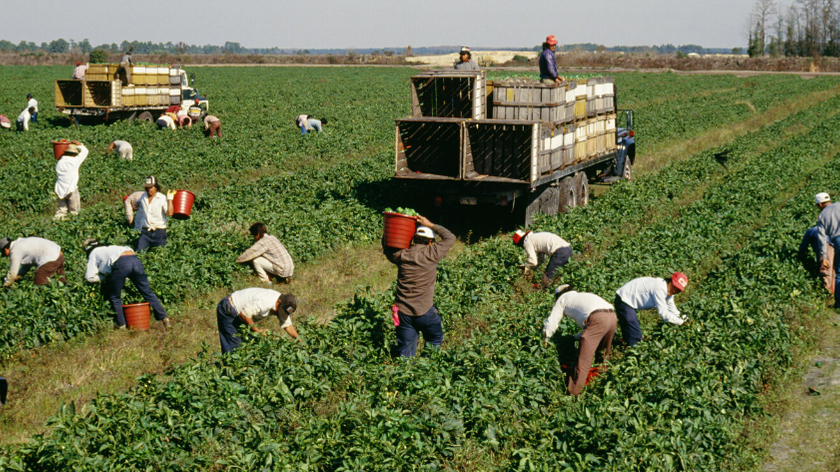Editor’s note: Beth Baltzan explains how the law currently prevents importation of products made in whole or in part by forced labor.
We remember the Tariff Act of 1930 because it included the infamous Smoot-Hawley tariffs. But we should remember it for something much more important: it prohibited imports made with forced labor. Back in the day, slave labor was seen principally as unfair competition, rather than as a matter of human rights. So the law included a “consumptive demand” exception. Under the exception, if the import made with forced labor was not also made in the United States, then the import was allowed in.
[Beth Baltan | March 25, 2020 | American Phoenix]
Senator Tom Harkin rightly found the loophole noxious and tried repeatedly to have it closed. He retired, but his fight lived on, and in 2016 Congress removed the exception. The bipartisan effort to close it included Sherrod Brown, Ron Wyden, Sandy Levin, Ron Kind, and Paul Ryan. Unbelievable though it might seem, there was opposition to closing it, including from those who benefit from, for example, cocoa made with forced child labor in West Africa.
There is one aspect of the elimination of the loophole that hasn’t gotten enough attention. The statute prohibits imports made in whole or in part with forced labor. Under the U.S. system, importers bear the burden of filing accurate import documents. When an importer imports a good, that importer is stating that the import complies with U.S. import requirements.
That means that importers are required not just to know whether the final product was made with forced labor – but whether any part of the good was made with forced labor. Importers might claim it’s too hard to know the whole supply chain. But that doesn’t somehow make their imports lawful – and in any event, companies like Ford are using blockchain to try to make sure they aren’t sourcing products illegally. As CBP has warned, importers must be able to answer the following question:
Do you know how your goods are made, from raw materials to finished goods, by whom, where, and under what labor conditions?
In this light, let’s revisit the forced labor report discussed in a previous post. The report – bipartisan, bicameral – names companies that “are suspected” of using forced labor, directly or indirectly. As we’ve discussed above, “directly or indirectly” is irrelevant for purposes of U.S import law.
The suspected companies include household names: Adidas; Calvin Klein; Campbell’s Soup Company; Coca-Cola; Costco; Esprit; H&M; Kraft Heinz; Nike; Patagonia; and Tommy Hilfiger. Not named in the report, but named in the Wall Street Journal article that was cited in the report, is The GAP.
According to the WSJ, in light of the conditions in forced labor camps in China, “PVH Corp., the parent company of Calvin Klein and Tommy Hilfiger, said it plans to increase scrutiny of raw materials suppliers. Nike said it was asking its suppliers if they use cotton from Xinjiang.” But we know that companies needed to ask these questions as a matter of law, if not ethics, as far back as 2016, when the forced labor loophole was closed. Cotton made with forced labor? It’s 2020, not 1820.
The GAP told the WSJ that the company is communicating with suppliers “our expectations of their social and environmental performance, which are conditions of doing business with us.” But these aren’t “social and environmental” expectations. They’re legal obligations – if you want to export to the United States. And the prohibition on forced labor is also part of the new NAFTA, so if Canada and Mexico don’t already prohibit imports made with forced labor, they will once the agreement enters into force.
As we have previously discussed, big trade associations have tried to use the COVID-19 crisis to achieve long sought-after tariff rollbacks. They have not yet succeeded, but it seems they are now pushing the Administration to suspend payment of tariffs for 90 days, apparently drawing an (unpersuasive) analogy to the relief the government has provided to individual taxpayers.
More than that, however, there is overlap between the advocates for duty deferral and the forced labor list. The American Apparel and Footwear Association, for example, has circulated emails asking for deferral, on the theory that it would help their employees (they also signed the letter flagged in the earlier post). Members of AAFA, according to its website, include Calvin Klein; The GAP; Patagonia; and Tommy Hilfiger.
AAFA – which acknowledged to the WSJ that there’s an “issue” – has argued that members need the cash flow from the tariff deferral to pay their employees. A curious thing, though; Calvin Klein and Tommy Hilfiger are both owned by PVH. And PVH has been on a buyback spree. In fact, it has authorized buybacks of nearly $2 billion through 2023! The GAP has authorized $1 billion in buybacks.
So, companies that have billions to spend on buybacks, and are suspected of profiting from forced labor, need 90 days to pay their employees?
And then we wonder why there’s a backlash against corporate globalization. To quote Michael Ignatieff (again), “It isn’t the anger of globalization’s losers that ought to worry us most, but the blindness of its winners.”
Read the original article here.













